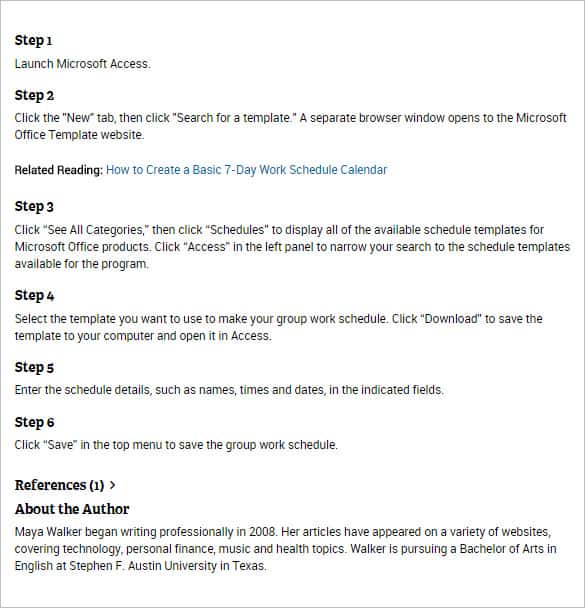

For example, the phrase “This may be one way to remember” can become “TmB0WTr!”. One recommended method to choosing a strong password that is still easy to remember: Pick a phrase, take its initials and replace some of those letters with numbers and other characters and mix up the capitalization. That means dictionary words, common phrases and even names should be avoided. A password should be unique, with meaning only to the employee who chooses it.For instance, choices like “password,” “password1” and “Pa$$w0rd” are equally bad from a security perspective. They must avoid basic combinations that are easy to crack. In addition to meeting those requirements, employees should also use common sense when choosing passwords.
#MS ACCESS PASSWORD MANAGEMENT TEMPLATE SOFTWARE#
These requirements will be enforced with software when possible. Employees should choose passwords that are at least eight characters long and contain a combination of upper- and lower-case letters, numbers, and punctuation marks and other special characters.
All passwords should be reasonably complex and difficult for unauthorized people to guess. The policy covers all employees who are responsible for one or more account or have access to any resource that requires a password. The purpose of this policy is to make sure all Company XYZ resources and data receive adequate password protection. Passwords are a key part of IT’s strategy to make sure only authorized people can access those resources and data.Īll employees who have access to any of those resources are responsible for choosing strong passwords and protecting their log-in information from unauthorized people. In addition to a password policy, IT departments should also do their best to protect accounts with technical controls - for example, encrypting all passwords that are stored on the company’s network and enforcing mandatory lockouts after a certain number of failed log-in attempts.īelow is a sample password policy template companies can use to create their own rules and password security strategies: Password Policy TemplateĮmployees at Company XYZ must access a variety of IT resources, including computers and other hardware devices, data storage systems, and other accounts. It’s more likely for data breaches to begin with a phishing attack or an insider threat than with a brute-force password cracking attempt. That latter point is especially important for companies to keep in mind when they create password policies. When a company is creating a written password policy, it’s important to focus on the entire life cycle of the password - including how passwords are chosen, how often they’re changed, and what employees should be doing to keep passwords from being stolen by outside hackers and malicious insiders. In many cases, those requirements are easily enforced using technology tools such as Microsoft’s Group Policy - and increasingly, those rules don’t really do that much to make passwords more secure. We don’t just mean the rules about password complexity - for example, that each password must contain at least one capital letter, number and special character. Getting users to follow password policies is difficult. For help, here’s a password policy template companies can use to create their own written rules. 
IT departments often struggle with getting users to choose secure passwords and keep them safe.






 0 kommentar(er)
0 kommentar(er)
